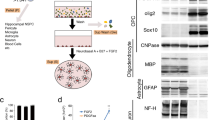Abstract.
The subcommissural organ (SCO) is a specialized ependymal structure of the brain that secretes glycoproteins into the cerebrospinal fluid (CSF), which condense to form a thread-like structure – Reissner's fiber (RF). The effects of soluble material released by RF were examined on neuroblastoma B104 cells grown in serum-free medium, using "low-density" and "high-density" culture systems. In the presence of soluble RF material, low-density cultures were suitable for analysis of the enhanced neurite outgrowth of B104 cells, while high-density cultures allowed the increased B104 cell aggregation to be examined. RF-induced neuronal aggregation and neuritic outgrowth were restricted to a perimeter around the RF. This standardized cell culture system reproduced in part the effects observed previously with primary cortical and spinal cord cell cultures and may serve the analysis of the mechanisms leading to aggregation and neurite outgrowth. In the present study, we analyzed variations in the rate of neural cell adhesion molecules, such as N-CAM and N-cadherin, induced by soluble RF material in high-density cultures.
Similar content being viewed by others
Author information
Authors and Affiliations
Additional information
Electronic Publication
Rights and permissions
About this article
Cite this article
El Bitar, F., Dastugue, B. & Meiniel, A. Neuroblastoma B104 cell line as a model for analysis of neurite outgrowth and neuronal aggregation induced by Reissner's fiber material. Cell Tissue Res 298, 233–242 (1999). https://doi.org/10.1007/s004419900081
Received:
Accepted:
Issue Date:
DOI: https://doi.org/10.1007/s004419900081




